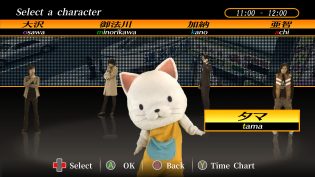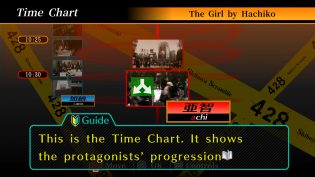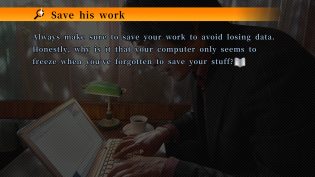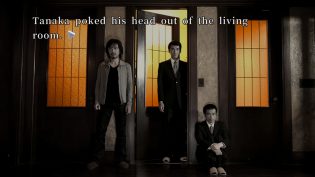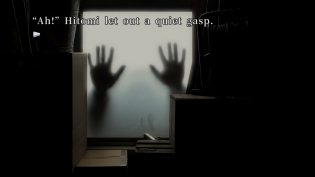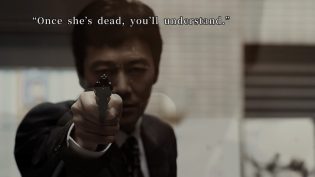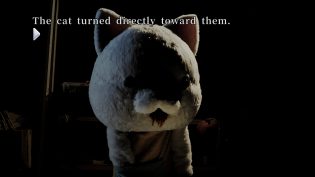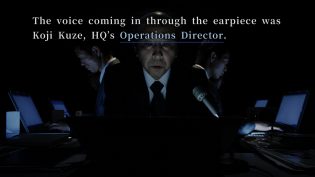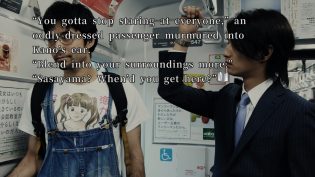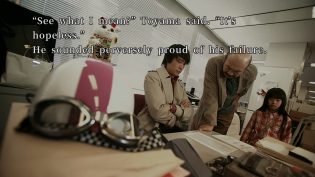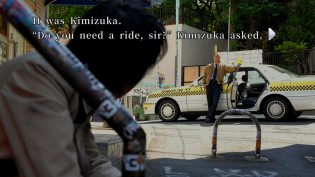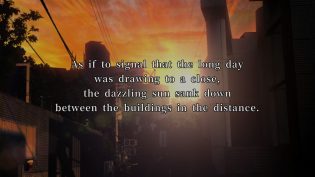When I’ve first learnt of 428: Shibuya Scramble, which wasn’t too long ago, I got incredibly interested. While I’m not a huge fan of visual novels as a genre, there have been many great examples of how to build an engaging interactive narrative among these games. And this title seemed like it had many curious concepts of its own. Multiple characters with converging storylines, similarity to the good old (actually often really bad) FMV titles from the 90s, several story genres in one game telling different sides of the story… It was only later that I’ve learnt that the game was actually originally released back in 2008 on Wii and this new port was the first non-Japan exclusive version of the game. During the first several hours I didn’t even consider this, since the game felt really smart about how it used its own mechanics and how high quality the visual side of the game was.
I was thoroughly enjoying this title for hours, fully expecting to end up praising it a lot and calling it a gem that needed everyone’s attention. But that was only halfway through the game. Then the rest of the game happened.
I’ve pretty much already described what the game is – it’s a visual novel, so it’s mostly text-driven, except it uses real photos and videos instead of drawn pictures which is far more common for the genre. Its main gimmick, one that works really well at first, is the fact that you have several characters going through the events of the story. Each of their stories are separate, yet they often converge and some have more in common than the others. Even more, each of these stories follow the tropes and the narrative presentation of completely different genres that fit the character. For example, the police detective side of the story is almost consistently high tension police procedural, the story of a girl stuck in a mascot costume is mostly a comedy, while the story of a father whose daughter has been kidnapped is a mix of family drama and a thriller. It works fantastically well and we really get to see each of the characters, and other often accidental acquaintances developed.
The flow of the story, however, has a specific “true” path, which means that mechanically each story and choices within it cannot exist separately from the others. Meaning, and the game teaches you this immediately, that you can do everything “right” in one character’s story but still get a “Bad End”, all because a choice in another character’s story affected the events unfavorably. In addition, there are occasional story blockers that require you to “jump” from another character story, effectively ensuring that there’s enough context for the events for you to follow. The story itself is divided into several blocks, each taking an hour or more of the story time and choices from one block only affect events within that block, so the whole thing is more manageable. And it’s a brilliant idea which works fantastically well. Until it completely falls apart.
And it falls apart for 2 simple reasons. Reason number one, is that the “timeline” that allows you to jump between the characters, is dreadfully thought out. Unlike something that you’d get in Zero Escape series (released after this game, which is important to note), the timeline is completely linear for each character and has very few “checkpoints” within a time slot. What that means is that, if you saw a “Bad end” in someone’s story, then go to another story and experiment with trying to figure out how to avoid that ending, when you change the time slot, you might need to go through an entire section of the story that is barely changed, if in any way, before you get to a new result. Which might still be a “Bad End”. Which isn’t something that becomes a problem until the very end of the game, where you have incredibly obtuse choices/consequences and a ton of ways to abruptly die and you suddenly find yourself re-watching the same 5 minute scenes over and over again. And this is exactly why I stopped trying to get all bad endings (which unlocks bonus story episodes), because managing all of that is just infuriating, slow, inefficient and tedious.
Reason number 2 is that the game simply stops using its own rules of logic at one point. For example, at one of the points in the story you will hit a blocker preventing you from going forward. And the “jump” to unlock that blocker is hidden behind an incorrect answer in an unrelated story that has absolutely no connection to the blocked story whatsoever. At some other points you will be looking at all of the stories completed for the time block except one or two, with no logical reason for the others to be blocked, only to play around with choices (re-watching the same scenes as mentioned) and learn that one of two exactly same sounding choices can suddenly make a character do something unrelated and unlock a new section of the plot. That, combined with the fact that these blockers appear even if you’ve already seen the story that unlocks the blocker (I can only assume that it was some feature limitation in the engine), meaning that you would still need to do several tedious steps to do something that you seemingly have no need to do anymore.
Though, just the UI/UX frustrations weren’t the issue with the last portions of the game. Another huge problem hides with the story itself. What works best in this game is the stories of all the different characters that get tied up in bizarre events and manage to constantly influence each other in small and big ways. That’s where the game is at its best, going for simply human relationships and simple truths. Unfortunately, the farther it goes, the more it gets caught up in its ridiculous over the top story with a stupid in its premise villain (the game at points out-Metal Gears the Metal Gear plot with its sheer ridiculousness, especially in one bonus episode) and by the end it completely drops the uniqueness of separate character plots. Suddenly, from a beautiful combination of vastly different stories you get into situations where three of the characters are in the same room at the same time and the game just goes “yeah, you need to switch characters now, for reasons” even though ultimately you see the plot the same way three times as a result.
Still, if this remastered localized port included proper redesign of the UI for the game, it would’ve been a far more glowing recommendation than what I can give otherwise now. Because most of the really stupid parts of the plot ultimately do nothing to the truly magic moments of the game. But the UI and some of the design choices make playing through the last parts of the game simply infuriating without a guide. In a game that already takes twice as long to tell its story than it needed to. Am I glad to have played 428: Shibuya Scramble? Most definitely and I would recommend checking it out. I just wish I could’ve been able to praise the game far more than I actually can.


